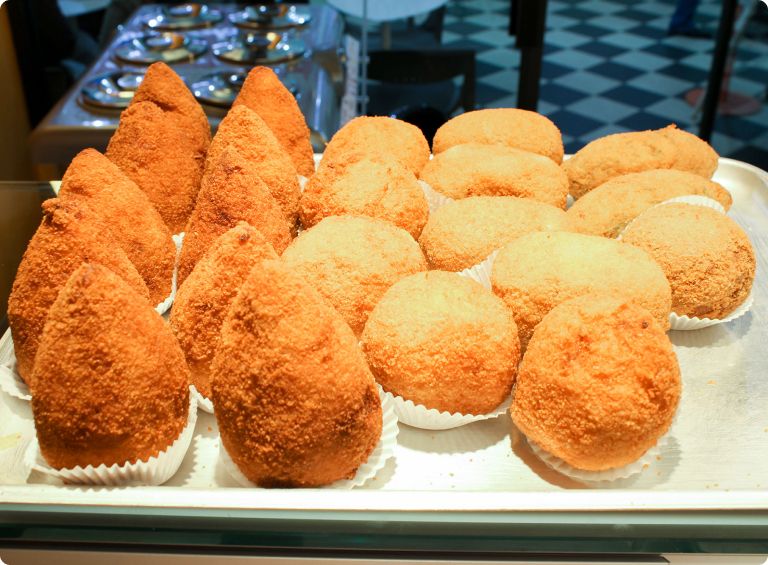Arancino History
The history of the Arancino Siciliano dates back to the Arab domination in Sicily, in the 10th century. The dish was created as a street food and quickly became popular among the island's inhabitants, who appreciated its taste and ease of consumption. The name "Arancino" comes from its orange-like shape, which is formed by the rice and meat filling that is coated with breadcrumbs and fried.
The original recipe was simple and consisted of a filling made from boiled rice, leftover meat and cheese, which was then covered with breadcrumbs and fried. Over the centuries, the recipe has evolved and now the arancino can be filled with a variety of ingredients, including ragù, ham, mushrooms, and mozzarella cheese.
In the 19th century, the arancino became popular in Palermo, the capital of Sicily, where it was offered as a street food for workers, soldiers and travelers. The dish then spread throughout the rest of the island and eventually reached the mainland, where it became a staple food in Italian cuisine.
Today, the arancino is an important part of the food culture in Sicily and is appreciated not only for its taste but also for its history. Many traditional Sicilian restaurants offer the dish on their menu, and it is also a popular snack food at festivals and markets.
In conclusion, the Arancino Siciliano is a delicious and historic dish that has been a staple food in Sicily for centuries. Whether enjoyed as a street food or in a restaurant, the arancino remains a popular dish that continues to evolve and delight palates around the world.




